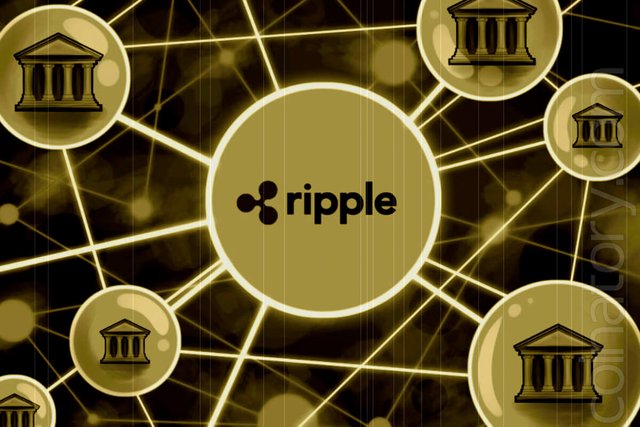
Imagine a scenario where you want to send money from a bank in your country of residence to another country; you will face three major challenges.
Firstly, The problem of currency conversion from the native currency to a foreign currency. Secondly, the transaction will take few days before the recipient receives the money. Thirdly, It will attract a high transaction fee.
These are the problems the Ripple network tries to solve. Ripple is a settlement system which enables the exchange and transfer of currencies from any part of the world in an easy, fast, and convenient way.
"Ripple is a real-time gross settlement system (RTGS), currency exchange, and remittance network created by the Ripple company," Wikipedia. The Ripple protocol aids the direct transfer of value between two parties anywhere in the world with a low fee.
History
Ripple's predecessor, RipplePlay, was first developed by Ryan Fugger in 2004, a Web developer from Vancouver British Columbia. This led to the birth of a new system by Jed McCaleb, founder of eDonkey network and co-founder of Stellar.
In May 2011, they started developing a digital currency system where transactions were verified by consensus among members rather than the mining process used by Bitcoin. In September 2012, McCaleb and Larson met with Ryan Fugger and presented their cryptocurrency idea to him, and that gave birth to OpenCoin.
OpenCoin started developing a new payment protocol called the Ripple transaction protocol (RTXP) gotten from Ryan Fugger's concepts. They tried to use this protocol to solve the problems in the banking system which include the delay in the transfer of funds, the issue of currency conversion, and the exorbitant transfer charges.
On September 2, 2013, OpenCoin, Inc changed its name to Ripple Lab, Inc, with Chris Larsen as the CEO.
The company also created its own form of digital currency called 'XRP.' The currency allows financial institutions to transfer money faster and cheaper.
Ripple Inc. later changed its name to Ripple, and over the years, the company has partnered with over 100 financial institutions.
Ripple XRP
The XRP can't be mined; all existing 100 billion tokens were created during its launch. The XRP acts as a bridge currency to other currencies. It does not discriminate against other currencies, and this makes it easier for any currency to be exchanged. The XRP is also used for advanced features like payment channels and escrow services.
As at the time of writing, the current market value of one XRP coin is $0.62 with a market cap of $24.41B and ranked at the 3rd position in total market cap value, according to Coinmarketcap.
Advantages of Ripple
Stability: Ripple has been very stable with good governance and competent team that consists of experts with vast knowledge of engineering and finance. This is one of the reasons why global financial institutions have employed the services of the company.
Fast and reliable: Ripple prides itself as one of the fastest and most reliable means of sending money across countries. According to the company, it takes approximately 4 seconds for a transaction to be processed. This is opposed to other methods of sending money across countries. For instance, it takes the banking system 3-5 days to achieve the same feat with high processing fees. In the same vein, it takes bitcoin, one hour plus to process a transaction with high fees.
Scalability: Ripple has the scalability to meet up with users demand. It takes one second to complete over 1500 transactions; this cannot be said for Bitcoin which handles just 3-6 transactions per second.
Not a crypto competitor: The Ripple network serves as a bridge between currencies and is not in any competition whatsoever with other currencies. Its primary aim is to eliminate the barriers of speed and high transfer fees experienced when sending and receiving money.
Concerns
The Ripple token are pre-mined: Ripple created 100 billion XRP tokens with a policy that 1 billion XRP will be released into the market monthly giving no room for any mining activity due to fear that hackers could use the opportunity to wreak havoc on the network. This raises concern about the XRP token's credibility. Some investors may feel the company has ulterior motives that they don't like to share with the public.
Ripple owns 60% of the XRP tokens: The company controls the supply of the XRP. Currently, the company has 60% of the 100 billion XRP coin developed. This is not good for the cryptocurrency industry, and it gives the company an edge in creating liquidity and a new market for the coin.
XRP is centralized: With the centralized nature of the token, and if the company should go against their policy to always release 1 billion token monthly out of the developed XRP tokens that are left, the company could be hit with regulations in the future.
Conclusion
Ripple aims for a global adoption in the world of commerce, and the XRP is doing great as it is currently ranked 3rd in the CoinMarketCap rating. So far, the company has been able to keep to its word, and it always complies with government regulations.
Whether Ripple succeeds at being the settlement system for financial institutions, in the long run, the potentials that the XRP token offers is just too good to ignore and crypto investors may want to take advantage of the opportunity that this coin offers.
Posted from my blog with SteemPress : https://coinatory.com/2018/05/25/what-is-ripple/